To add a dramatic touch to your home with something tall and tropical, look no further than the Kentia palm (
Howea forsteriana)
. It's
one of the all-time-most-popular palm houseplants. Unlike many other palm species, Kentia can handle low sunlight exposure, air conditioning and central heating. It's also very tolerant of neglect. Just one consideration: Make sure you have plenty of space and an adequate ceiling height, because these tropical babies like to grow and grow and grow.
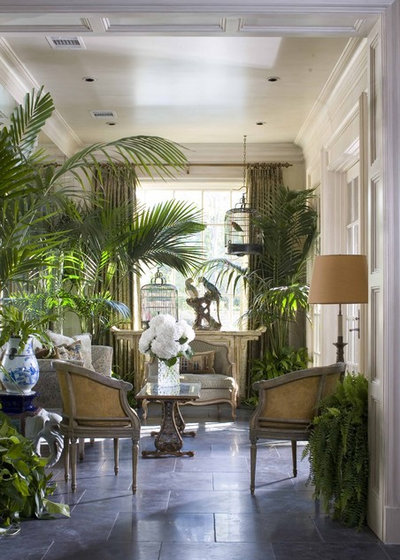
Period Homes, Inc.
This collection of three potted palms in a Dallas show house space conveys the feeling of a traditional conservatory, thanks to the lush tropical underplanting in each container, with arching fronds that fill the vertical space.
Whether your dream decor is a casual beach style or something closer to the formal splendor of a Victorian palm court, Kentia palm can help you get there.

Todd Peddicord Designs
A billiards room filled with antiques and old-world style looks like an exotic empire-style jungle destination. Large pots filled with Kentia palm as the "thriller" and Boston fern as the "spiller" create a tropical ambience that's incomparable.
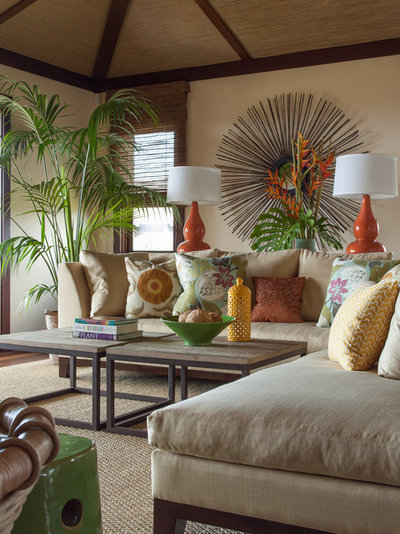
Henderson Design Group
An elegant Hawaiian home furnished with neutral decor is the perfect spot for a tall Kentia palm, which creates a connection to the lush landscaping outdoors. Orange and yellow pillows and decorative accessories create a joyful dance of color together with the philodendron leaf arrangement and the feather-like green palm fronds.
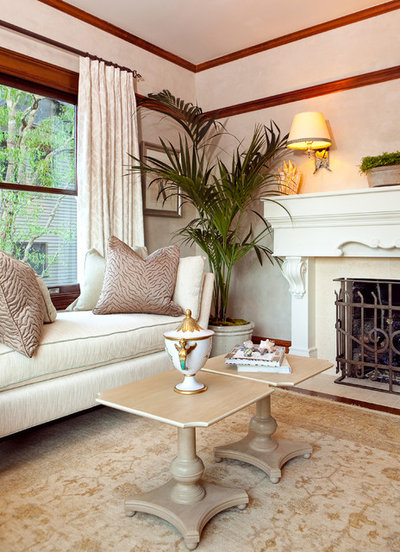
Not surprisingly, a Kentia palm looks right at home in a classic home in Portland, Oregon, built at the end of the Victorian era; palms became popular in that period and were a key element of Victorian parlor style.
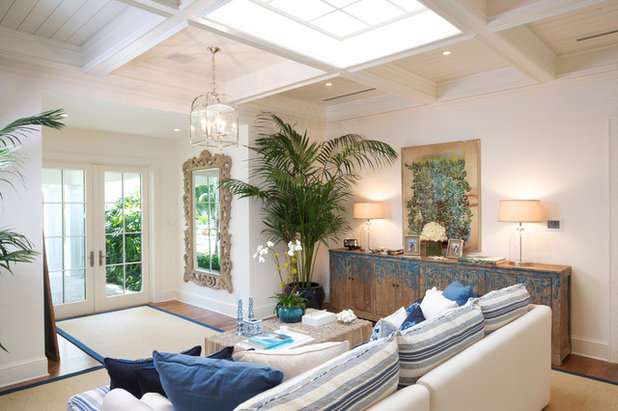
Bon Vivant
An elegant Miami home with white walls and hardwood floors (not to mention a fantastic skylight, which plants love) becomes a taste of paradise with the addition of Kentia palms.
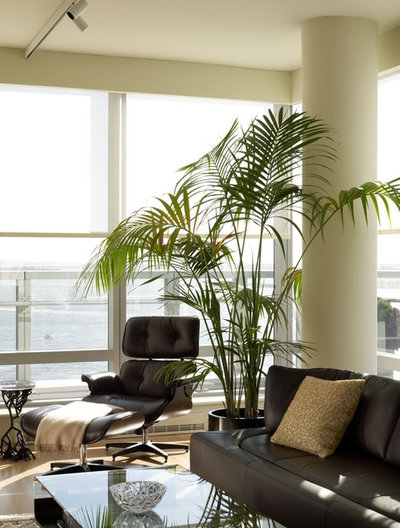
Incorporated
A single palm looks right at home amid modern furnishings in this New York coastal high-rise, and is a nice distraction from the large column one often finds in modern construction.
As is clearly seen here, at least two Kentia palms are often needed in one container for a full-looking arrangment, depending on the size of the plants.
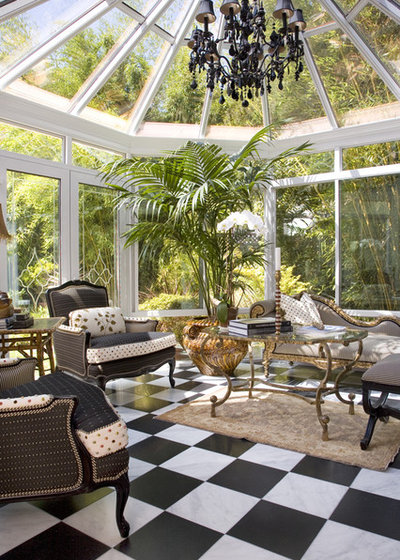
Get Back JoJo
How to Care for Your Kentia PalmTemperature: 50 to 75 degrees Fahrenheit (10 to 20 degrees Celsius) is ideal.
Light: It prefers areas with partial shade, not full sun. It will tolerate a somewhat dark corner indoors.
Water: Water only when the uppermost soil layer is dry. Mist the plant to simulate humidity and to prevent spider mite infestation, which can occur with dust buildup. Overwatering will cause root rot, and underwatering can cause yellow tips that will turn to brown. If the stalks and leaves are not standing upright, as they should, try a deep watering, assuming there is sufficient drainage.
Soil: Sandy with good drainage, though Kentia is adaptable to a variety of soil conditions. Because the plant is very slow growing, you will most likely keep it in the same container for many years. Replace old, spent soil (above the root ball) occasionally.
Feeding: Apply an 18-18-18 slow-release specialized palm fertilizer according to the package instructions once or twice a year, in the summer and spring.
General: Avoid repotting, though if it’s necessary, be very cautious when handling the root ball. The Kentia is a slow-growing palm with fragile roots.
Other Considerations
Air purification: Kentia is effective at cutting VOC levels — toxins that are released by cleaning supplies, printers and other household items.
Pets: Kentia is nontoxic.
Natural environment: Lord Howe Islands, east of Australia, where the single-trunk tree grows relatively slowly, reaching an average mature height of 20 feet. Long stalks produce bunches of white flowers, which turn into small, red, egg-shaped fruits.
A note on identity: The Kentia palm can look similar to the Parlor palm, and is often mistakenly called by that name. While they both make good houseplants, the Parlor palm will remain quite small and is generally used in a pot on a tabletop, while the Kentia can become quite tall.





